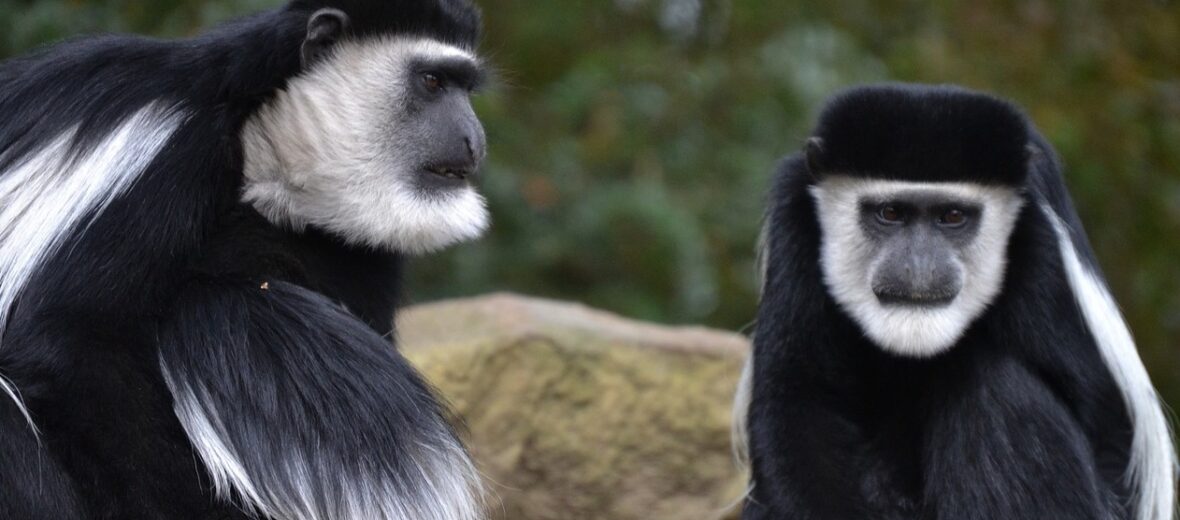
This is the colobus monkey. There are 2 species of black and white colobus monkeys found in Kenya, the ones that live in coastal forests and the ones in inland high-country areas. Red colobus monkeys are also found in East Africa, but are endangered and very rare. 2 other types of colobus monkeys in Africa are the black and the olive. These monkeys live in all types of forests, including montane and gallery forests. These critters are under threat from hunting and habitat loss.
First the Stats…
Scientific name: Colobus
Weight: Up to 30 lbs.
Height: Up to 30 inches
Life span: Up to 30+ years
Now on to the Facts!
1.) Males defend their group and its territory from others with roars, tongue-clicks, chases, and an unusual stiff-legged display.
2.) Black and white colobus monkeys spend their days eating, relaxing, and socializing with each other.
3.) Predators include leopards, large eagles, chimpanzees, and humans.
4.) They produce a low-pitched roaring chorus for displaying and alarm-calling.
5.) The colobus monkey is mostly arboreal (spend part or all of their time in trees).
But wait, there’s more on the colubus monkey!
6.) Colobus monkeys do not have thumbs like other monkeys do. Rather, they have nubs.
7.) These monkeys are found in troops of three to fifteen members.
Did you know…?
Colobus’ can jump up to 20 feet!
8.) They are herbivores (eat plant matter) that eat fruits (preferably unripe), flowers, twigs, bark, and even soil. It is suspected that soil is consumed in order to gain sodium and minerals. The mantled guereza has even taken to eating concrete on occasions!
9.) The king colobus shows affection, in part, by burping in the face of another.
10.) To move between trees, they will catapult themselves from branch to branch.
But wait, there’s still more on the colubus monkey!
11.) Infants are born to totally white fur, sans their ears, muzzle, hands, and feet.
12.) Due to their shortened thumbs, their name “colobus” comes from “ekolobóse”. This is a Greek word, that means “mutilated” or “he’s cut short”.
Now a Short Colobus Monkey Video!
Also, check out the Critter Science YouTube channel. Videos added frequently!
Want to suggest a critter for me to write about? Let me know here.



